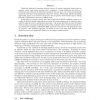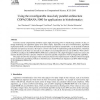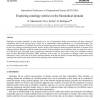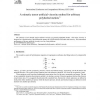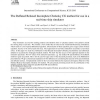PROCEDIA
2010
14 years 7 months ago
2010
Colorectal cancer is initiated in colonic crypts as a consequence of alterations leading to the disruption of the normal colonic cellular process. We propose a model, which couple...
114
Voted
PROCEDIA
2010
14 years 7 months ago
2010
The field of bioinformatics is witnessing a rapid and overwhelming accumulation of molecular sequence data, predominantly driven by novel wet-lab sequencing techniques. This trend...
132
Voted
PROCEDIA
2010
14 years 7 months ago
2010
This work presents an approach to the obstacle avoidance problem, applicable in the frame of driver assistance. A decision, expressed as a proposed acceleration vector for the veh...
120
Voted
PROCEDIA
2010
14 years 7 months ago
2010
One of the greatest challenges in computational chemistry is the design of enzymes to catalyze non-natural chemical reactions. We focus on harnessing the distributed parallel comp...
113
click to vote
PROCEDIA
2010
14 years 7 months ago
2010
Traditional methods of assessing chemical toxicity of various compounds require tests on animals, which raises ethical concerns and is expensive. Current legislation may lead to a...
108
Voted
PROCEDIA
2010
14 years 7 months ago
2010
Currently several computational problems require high processing power to handle huge amounts of data, although underlying core algorithms appear to be rather simple. Especially i...
143
Voted
PROCEDIA
2010
14 years 7 months ago
2010
Ontologies are gaining popularity in many domains as a way of representing, dealing and reasoning with large volumes of information, and they are starting to play a major role in ...
90
Voted
PROCEDIA
2010
14 years 7 months ago
2010
We construct a new mimetic tensor artificial viscosity on general polyhedral meshes. The tensor viscosity is designed as a discretization of the differential operator div (u) with...
110
Voted
PROCEDIA
2010
14 years 7 months ago
2010
We argue that producing maintainable high-performance implementations of finite element methods for multiple targets requires that they are written using a high-level domain-speci...
115
click to vote
PROCEDIA
2010
14 years 7 months ago
2010
Ship simulators are used for training purposes and therefore have to calculate realistic wave patterns around the moving ship in real time. We consider a wave model that is based ...

